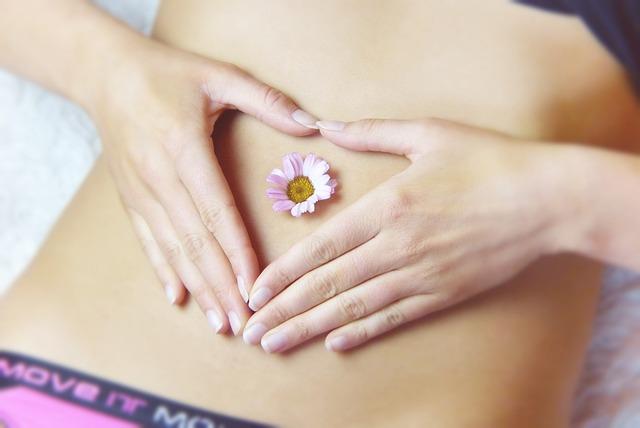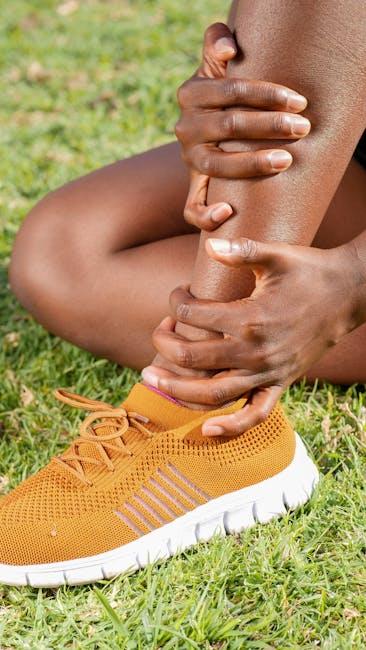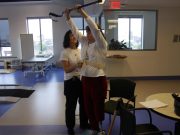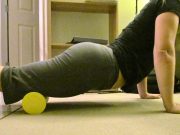Joint pain can be a relentless and unwelcome companion in our daily lives, often hindering our ability to perform even the simplest of tasks. Whether it stems from arthritis, injury, or the natural aging process, the discomfort can feel overwhelming and persistent. However, there is hope and relief available through gentle, simple stretches that you can easily incorporate into your routine. In this guide, we will explore effective stretching techniques designed to alleviate joint pain and enhance your mobility, empowering you to reclaim your comfort and vitality. With empathy and understanding, we recognize the challenges you face and are here to support you on your journey to improved well-being. Let’s take the first step together towards a life with less pain and more freedom.
Understanding Joint Pain Causes and the Benefits of Stretching
Joint pain can be a persistent issue, affecting people of all ages and lifestyles. The discomfort often stems from various causes such as arthritis, injuries, or even poor posture. While the origins of joint pain can be diverse, incorporating regular stretching into your routine can offer significant relief and improve your overall joint health.
Stretching helps by increasing flexibility, enhancing blood circulation, and reducing stiffness. Here are some of the benefits you can expect from integrating simple stretches into your daily routine:
- Improved Range of Motion: Regular stretching can help you maintain and even increase your joints’ range of motion, making daily activities easier.
- Decreased Stiffness: Stretching helps keep your muscles flexible, which can reduce the stiffness that often accompanies joint pain.
- Enhanced Blood Flow: By stretching, you promote better circulation, which can aid in delivering nutrients to your joints and removing waste products.
| Stretch | Target Area | Duration |
|---|---|---|
| Cat-Cow Stretch | Spine, Shoulders | 30 seconds |
| Quad Stretch | Thighs | 15 seconds each leg |
| Shoulder Roll | Shoulders, Neck | 10 rolls each direction |

Targeted Stretches for Key Joints: Finding Relief Through Movement
Experiencing joint pain can be a daily challenge, but incorporating specific stretches into your routine can offer significant relief. By focusing on key joints such as the shoulders, knees, and hips, you can enhance flexibility and reduce discomfort. Below are some targeted stretches that can be easily integrated into your day:
- Shoulder Circles: Stand or sit up straight, then slowly move your shoulders in a circular motion. This helps to loosen up the shoulder joints and improve range of motion.
- Knee Hugs: While lying on your back, gently pull your knees towards your chest. This stretch can alleviate tension in the knee joints and provide comfort.
- Hip Flexor Stretch: Kneel on one knee with the other foot in front. Lean forward slightly to stretch the hip flexors. This can help in reducing stiffness and improving hip mobility.
For a quick reference, here’s a simple table summarizing these stretches:
| Stretch | Target Joint | Benefit |
|---|---|---|
| Shoulder Circles | Shoulders | Improves range of motion |
| Knee Hugs | Knees | Relieves tension |
| Hip Flexor Stretch | Hips | Reduces stiffness |
Remember, consistency is key. Performing these stretches regularly can lead to long-term relief and improved joint health. Listen to your body, and always consult with a healthcare professional if you’re unsure about the best stretches for your condition.

Step-by-Step Guide to Effective Stretching Routines for Joint Health
Incorporating stretching routines into your daily regimen can be a game-changer for maintaining joint health and reducing pain. To begin, focus on gentle movements that target the major joints in your body. Prioritize areas like the hips, knees, shoulders, and wrists, as these are commonly affected by stiffness and discomfort. When stretching, ensure you move slowly and deliberately, paying close attention to your body’s signals. Remember, consistency is key, so aim to stretch daily for optimal results.
- Warm-Up First: Always start with a brief warm-up, such as a brisk walk or light arm circles, to prepare your joints for stretching.
- Focus on Breathing: Deep, controlled breaths help you relax and can increase the effectiveness of your stretches.
- Hold and Release: Hold each stretch for about 20-30 seconds and gently release. Repeat each stretch 2-3 times.
| Joint Area | Suggested Stretch |
|---|---|
| Hips | Seated Butterfly Stretch |
| Knees | Quad Stretch |
| Shoulders | Overhead Arm Stretch |
| Wrists | Wrist Flexor Stretch |
It’s important to tailor your stretching routine to your personal needs. Listen to your body and adjust the intensity of each stretch accordingly. If any movement causes pain, stop immediately and consult a healthcare professional. With patience and dedication, these simple stretches can help alleviate joint pain and improve your overall mobility.

Listening to Your Body: Adapting Stretches to Your Comfort Level
Recognizing the signals your body sends is crucial in adapting stretches to ensure both effectiveness and comfort. Everyone’s flexibility and pain thresholds are unique, which is why it’s important to listen to what your body is telling you. If a stretch feels painful rather than just slightly uncomfortable, it’s time to adjust. Begin with a gentler version of the stretch and gradually increase intensity as your body allows.
Here are some key tips to adapt stretches for your comfort:
- Start Slow: Ease into each stretch, allowing your muscles and joints to adjust.
- Use Props: Items like yoga blocks or towels can help support your body, reducing strain.
- Modify Poses: Slightly bend knees in forward folds or use a wall for balance in standing stretches.
Here’s a simple table to help you adjust stretches according to your comfort:
| Stretch Type | Modification |
|---|---|
| Seated Forward Bend | Use a strap around feet to gently pull forward. |
| Standing Hamstring Stretch | Bend knees slightly to reduce tension. |
| Child’s Pose | Place a cushion under hips for added support. |








































